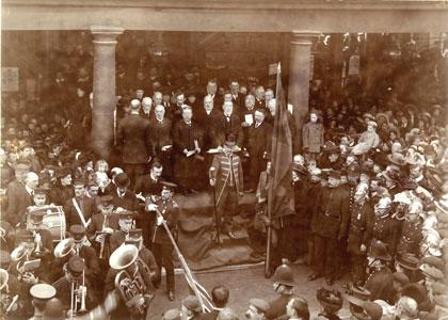Band land
Before the mid-19th century, brass instruments had been in use in church and in the armed services. Mass production made these instruments accessible and local brass bands developed - often in growing industrial communities. Some, like the Hillingdon Temperance Band, had their roots in the Band of Hope movement - a charity highlighting the dangers of alcohol.

Hayes had several bands. The local corps of the Salvation Army Band had a regular intake of bandsmen from RAF Uxbridge after the Second World War.
The Botwell Brotherhood Band, established in 1929, first practised under a paraffin lamp in a wooden hut on Hayes football ground. They later moved to a café, then the Labour Hall in Pump Lane. In 1972, they performed in Europe in front of the British Ambassador.
Bands often played in the open air, and many local parks were equipped with bandstands. Fassnidge Park, Uxbridge and Barra Hall Park, Hayes, still have their original bandstands.